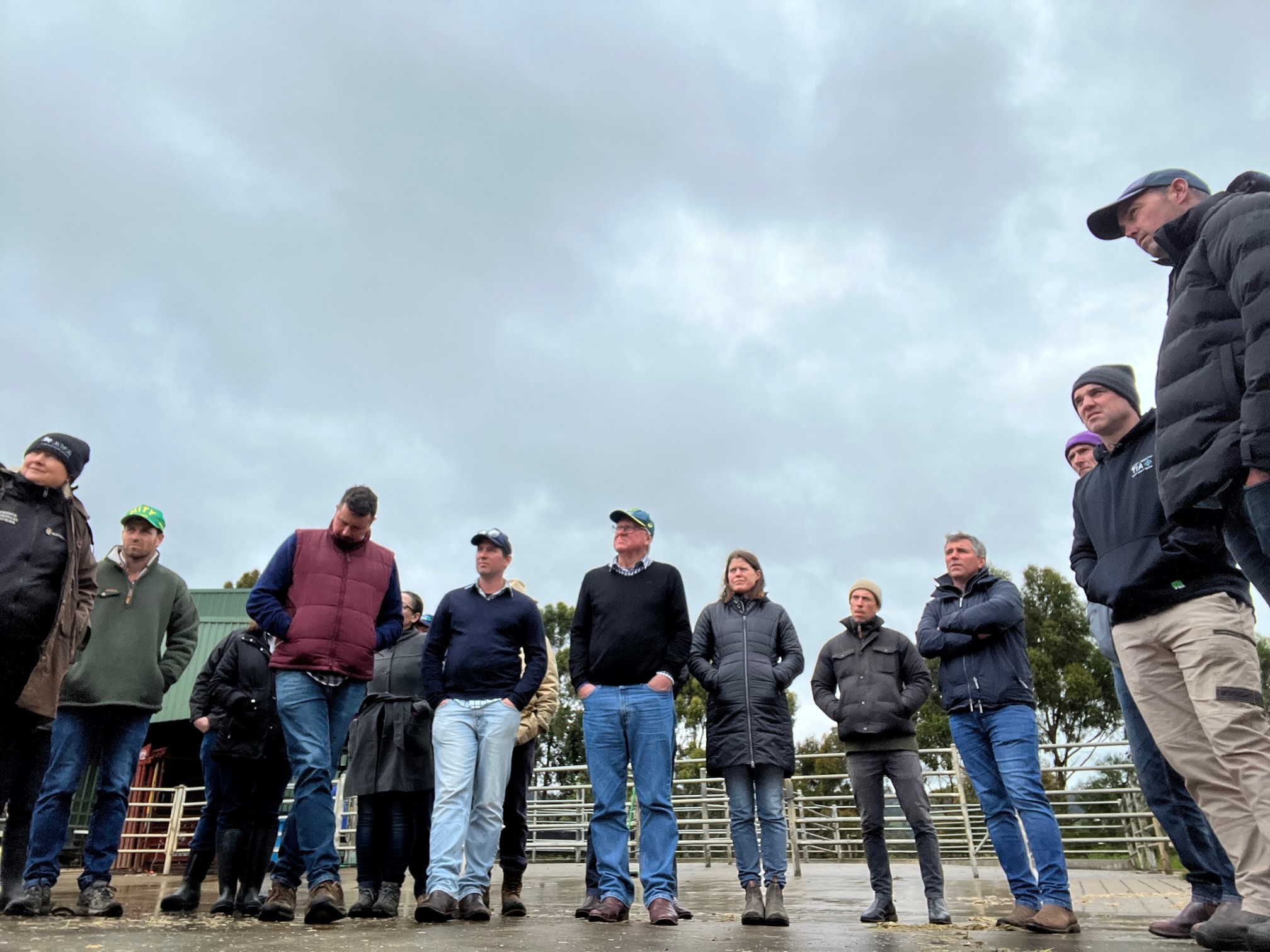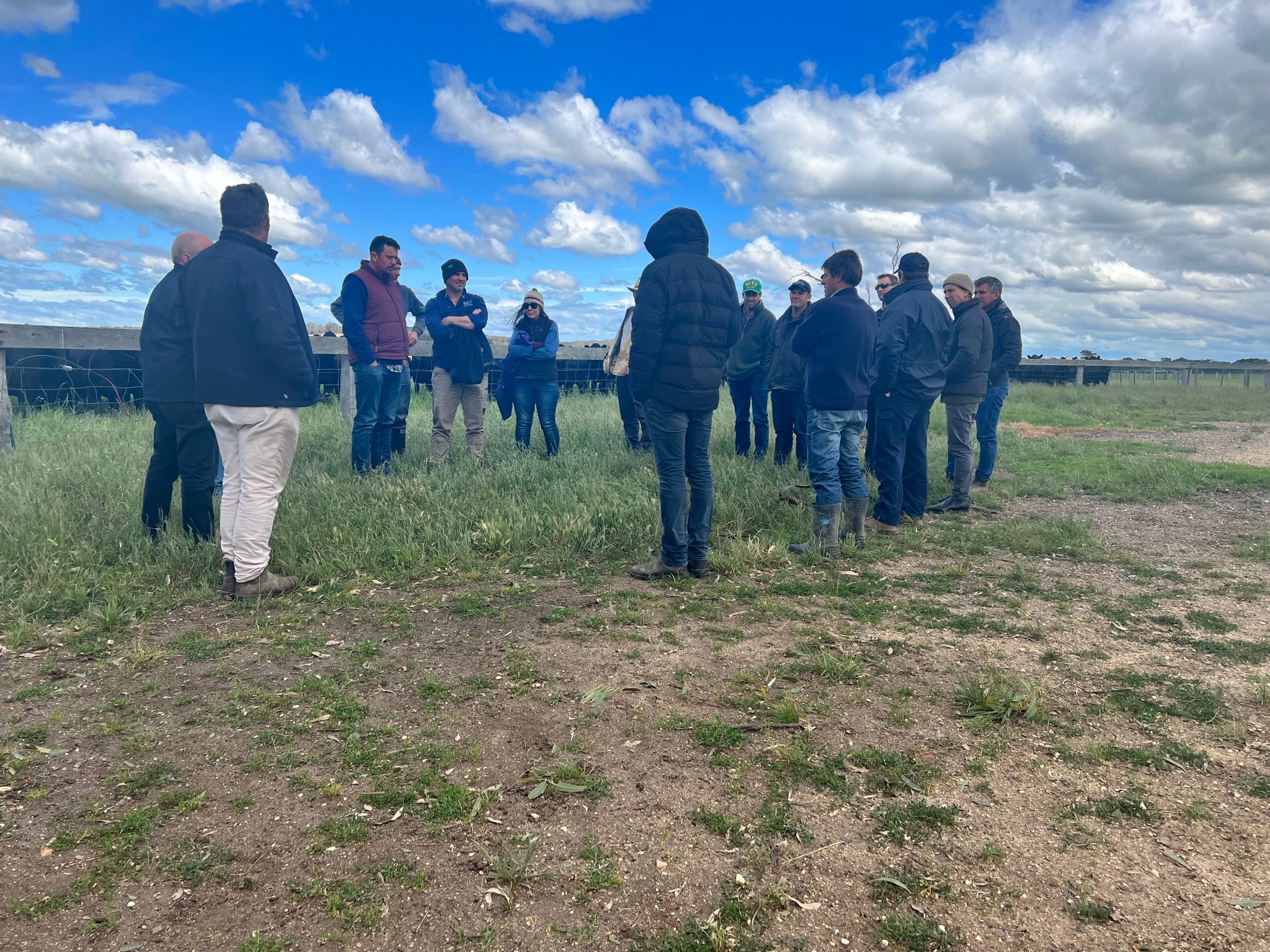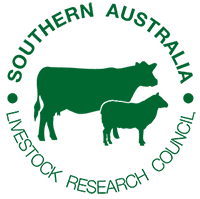On the 22-23 November our Victorian and Tasmanian (Western Vic, Central Vic and South-east Vic & Tas) Regional Committees met in Gippsland to explore all things pasture and to set the next round of priorities for MLA’s Producer Demonstration Sites.
The two-day meeting began with a tour of the research facilities at Agriculture Victoria’s Ellinbank Smart Farm, where the committees had the opportunity to hear from and see one of the world’s leading dairy research farms firsthand. Ellinbank is currently implementing a program to develop the tools and processes required to become the world’s first carbon neutral dairy farm by reducing methane emissions, improving fertiliser and manure utilisation, and generating their own electricity through wind, hydro, solar, and bio-digestion. The tour also included presentations on feedbase and the use of technology in agriculture. This tour provided the committee with valuable insight into the long-term work being funded and driven at the government level.
Following the visit to Southern Gippsland, the tour continued east to the drier and more variable areas of Gippsland. This was one of the Tasmanian committee members’ first visits to Gippsland farms, and he could clearly see and understand the strong similarities between South East Victoria and Tasmania with high rainfall dairy regions and variable dryland areas in both regions, and why these regions were linked as a strategic SALRC region.
The Committees visited several farms in Central and East Gippsland with a focus on pastures. Visits included:
Property 1 (Flynn, Vic):
An Angus seedstock breeder with a large commercial herd of cattle, supplying feedlot and fattening markets. This herd has an Angus genetic base from New Zealand and has bucked the trend to stay focused on an animal that the producers believe suits their farming system. This property has a pasture-based system, with a strong emphasis on implementing new and innovative pasture and cropping systems, such as growing fodder beets to fill winter feed gaps.
A detailed discussion was held about the rising cost of fertilisers and what this producer was doing to increase their fertiliser use efficiency with a large batching planting for the mixing of liquid urea. They believe that this system increases efficiency by up to 50% and allows for the application of other liquid treatments to aid in pasture growth and quality, as well as soil biological and structural improvements.
Members of the committee were also able to see this farm’s approach to drought security. This included their approach to long-term underground fodder storage, as well as some of the farm’s capital investments in infrastructure that they believe are necessary for safety, animal welfare, and reducing expensive labour inputs.
Property 2 (Walpa, Vic):
The farm showcased self-replacing Angus cattle and composite sheep enterprises that were well established. This system held a very strong focus on the bottom line of all agricultural activities. The farming system includes a high-quality, high-performance irrigated pasture. Pasture typically has balanced fertility and available nutrients, and the opportunity to explore innovative perennial pasture options is high on their priority list. The landowner is an MLA PDS farmer working on a project to “establish perennial pastures in a variable climate.”
Property 3 (Lindenow, Victoria):
A property with strong historical ties to the area, this enterprise has a strong Angus herd base supplying commercial cattle to the feeder industry, with the addition of black Suffolk sheep recently. Over the last four years, an innovative and modern irrigation scheme has been added to the property to provide resilience to seasonal events, with a strong emphasis on maintaining breeder numbers. The pasture base is primarily annual, with strong native components, and the producer is renovating much of the farm. The long-term goal of the producer is to increase perenniality.
Day one of the tour concluded at Lightfoot and Sons Winery on the Mitchell River near Bairnsdale. Here the group were treated to a practical presentation on the region’s vegetable and wine production and were able to engage in a forum to unpack issues around research and development, industry bodies, levies and needs for innovation in agricultural practices. Again, the committee members on the tour remarked that although “red meat, wine and vegetable are different commodities, our industry needs for RDE&A aligned at a macro level”.
On day two, Committee members heard from MLA and reviewed and set PDS priorities for their respective regions. Following individual work, the groups came together to discuss their priorities and issues. The gathering of so many bright and practical minds to unpack the problems confronting our industry created a buzz of energy. This collaborative effort broadens the collegiate nature of what SALRC can offer those involved in committees, MLA, and the larger producer communities. The outcomes of this process reinforced the commonality that southern livestock producers share, as we face the similar problems in our farming systems despite significant differences in soil types and rainfall.
The tour came to an end with a stop at the Gippsland Research Farm, which is managed by the Gippsland Agricultural Group. They are a producer-led grower group that provides practical trials and demonstrations on the farm as well as across satellite sites at member farms in East and Central Gippsland. This group began in 2019 and has worked to develop a grower network of 360 members who operate at the grass roots level to learn and adapt their farming systems into robust profitable businesses by working across five pillars: livestock, pastures, grains and fodder, soils, and a healthy farming community. Three MLA PDS projects are associated with this group and its members, and the involvement of producers in the region clearly demonstrates the need and relevance of this type of work.
This tour was extremely beneficial to everyone who participated. There was a lot of energy and discussion with a wide range of producers and industry representatives. This forum was ultimately very efficient in terms of setting priorities for the three committees. As funding tightens and new processes for MLA in funding RDE&A emerge, this forum highlighted the potential for SALRC to feed into more than PDS priorities. A broader look at our country’s approach to agricultural research and development, the development of new red meat strategies, the work of our states’ drought hubs, and agricultural innovation pushes could all serve as important conduits for the producer-led work of the SALRC’s committees to serve multiple purposes in the future.
Article written by:
Jen Smith, Regional Chair South-east Victorian and Tasmanian Regional Committee


Ellinbank Tour
Farm Tour
